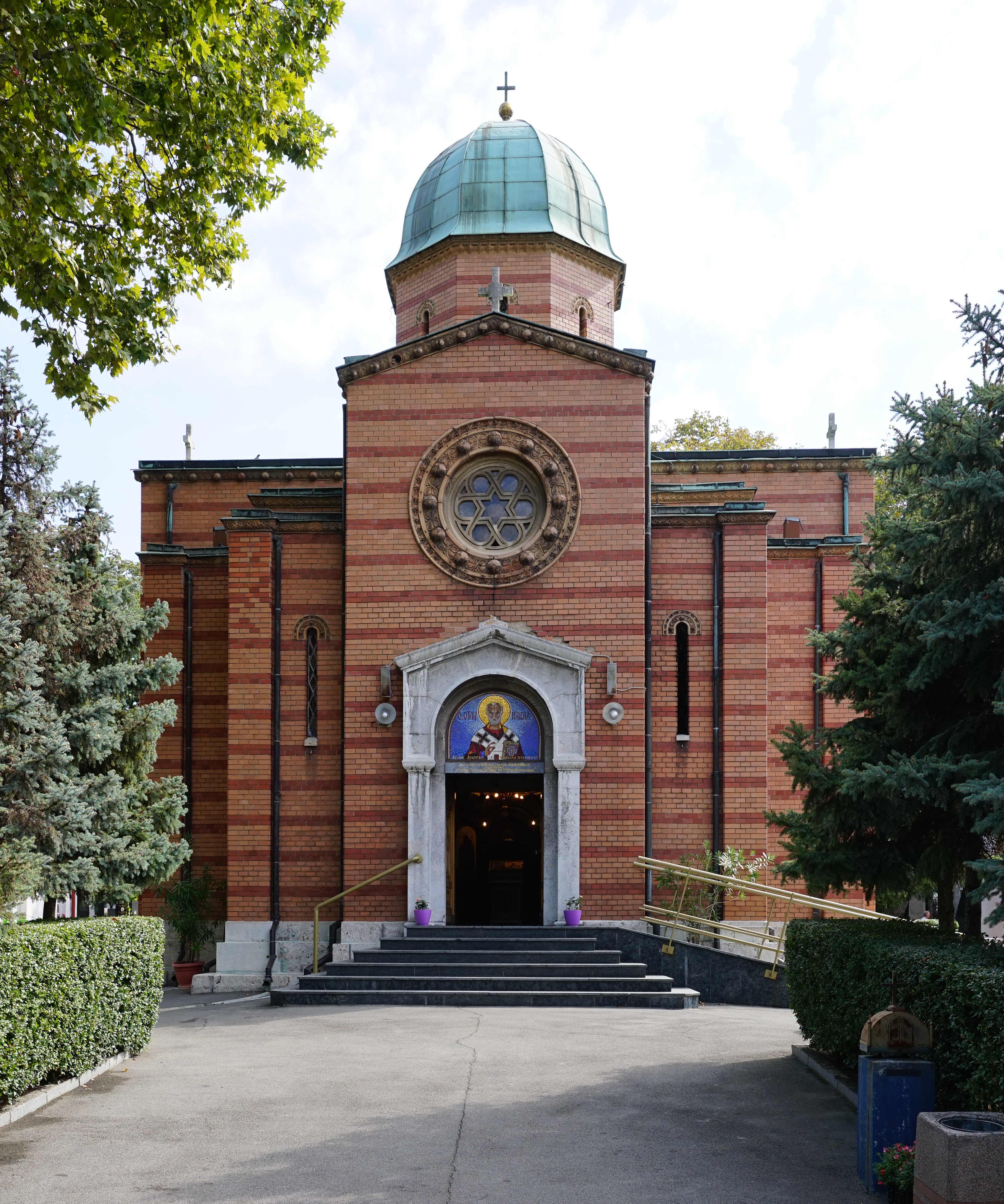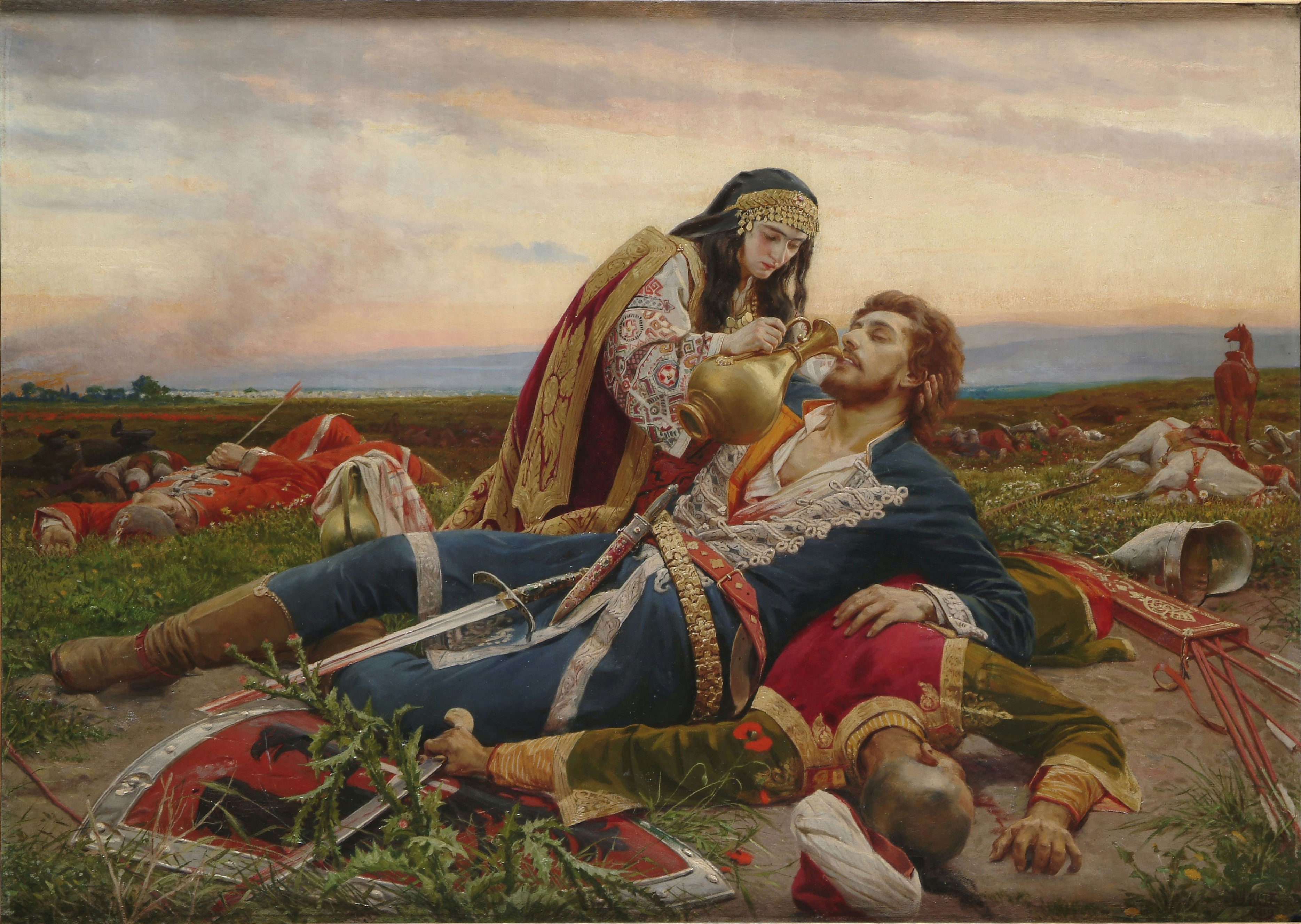|
Mirijevo II
Mirijevo ( sr-cyrl, Миријево, ) is an urban neighborhood of Belgrade, Serbia. It is located in Belgrade's municipality of Zvezdara. One of the largest single neighborhoods in Europe, consists of several sub-neighborhoods (Staro & Novo Mirijevo, Mirijevo II-IV, etc.) Location and geography Mirijevo is located 11 kilometers east of downtown Belgrade, on the eastern outskirts of Belgrade's urban zone. It extends into the neighborhoods of Ćalije on the north, Zvezdara on the west and Mali Mokri Lug (Zeleno Brdo) on the south. The neighborhood developed in the valley of Mirijevski potok (creek which is a right tributary to the Danube, at the neighborhood of Rospi Ćuprija), between the Zvezdara hill in the west (253 meters), Orlovica hill (274 meters, read as ''Orlovitsa''; on some city maps given as ''Orlovača'') in the north-east and Stojčino hill (274 meters) in the south, so the neighborhood today mostly develops in the south-east, the only remaining unurbanized part ... [...More Info...] [...Related Items...] OR: [Wikipedia] [Google] [Baidu] |
List Of Belgrade Neighbourhoods And Suburbs
Belgrade, the capital city of Serbia, is divided into seventeen municipalities, of which ten are urban and seven suburban. In this list, each neighbourhood or suburb is categorised by the municipality in which it is situated. Six of these ten urban municipalities are completely within the bounds of Belgrade City Proper, while the remaining four have both urban and suburban parts. The seven suburban municipalities, on the other hand, are completely located within suburban bounds. Municipalities of the City of Belgrade are officially divided into local communities ( Serbian: месна заједница / ''mesna zajednica''). These are arbitrary administrative units which on occasion correspond to the neighbourhoods and suburbs located in a municipality, though usually they don't. Their boundaries often change as the communities merge with each other, split from one another, or change names, so the historical and traditional names of the neighbourhoods survive. In the majority ... [...More Info...] [...Related Items...] OR: [Wikipedia] [Google] [Baidu] |
Danube
The Danube ( ; ) is a river that was once a long-standing frontier of the Roman Empire and today connects 10 European countries, running through their territories or being a border. Originating in Germany, the Danube flows southeast for , passing through or bordering Austria, Slovakia, Hungary, Croatia, Serbia, Romania, Bulgaria, Moldova, and Ukraine before draining into the Black Sea. Its drainage basin extends into nine more countries. The largest cities on the river are Vienna, Budapest, Belgrade and Bratislava, all of which are the capitals of their respective countries; the Danube passes through four capital cities, more than any other river in the world. Five more capital cities lie in the Danube's basin: Bucharest, Sofia, Zagreb, Ljubljana and Sarajevo. The fourth-largest city in its basin is Munich, the capital of Bavaria, standing on the Isar River. The Danube is the second-longest river in Europe, after the Volga in Russia. It flows through much of Central and Sou ... [...More Info...] [...Related Items...] OR: [Wikipedia] [Google] [Baidu] |
Smederevo
Smederevo ( sr-Cyrl, Смедерево, ) is a city and the administrative center of the Podunavlje District in eastern Serbia. It is situated on the right bank of the Danube, about downstream of the Serbian capital, Belgrade. According to the 2011 census, the city has a population of 64,105, with 108,209 people living in its administrative area. Its history starts in the 1st century BC, after the conquest of the Roman Empire, when there existed a settlement by the name of ''Vinceia''. The modern city traces its roots back to the Late Middle Ages when it was the capital (1430–39, and 1444–59) of the last independent Serbian state before Ottoman conquest. Smederevo is said to be the city of iron ( sr, / ) and grapes (). Names In Serbian, the city is known as ''Smederevo'' (Смедерево), in Latin, Italian, Romanian and Greek as ''Semendria'', in Hungarian as ''Szendrő'' or ''Vég-Szendrő'', in Turkish as ''Semendire''. The name of Smederevo was first r ... [...More Info...] [...Related Items...] OR: [Wikipedia] [Google] [Baidu] |
Bocce
(, or , ), sometimes anglicized as bocce ball, bocci or boccie, is a ball sport belonging to the boules family. Developed into its present form in Italy, it is closely related to British bowls and French , with a common ancestry from ancient games played in the Roman Empire. Bocce is played around western, southern and southeastern Europe, as well as in overseas areas with historical Italian immigrant population, including Australia, North America, and South America, principally Argentina and the southern Brazilian state of Rio Grande do Sul. Initially played just by the Italian immigrants, the game has slowly become more popular with their descendants and more broadly. History Having developed from games played in the Roman Empire, Bocce developed into its present form in Italy (where it is called ', the plural of the Italian word ' which means 'bowl' in the general sporting sense), it spread around Europe and also in regions to which Italians have migrated. In South Amer ... [...More Info...] [...Related Items...] OR: [Wikipedia] [Google] [Baidu] |
Tilia
''Tilia'' is a genus of about 30 species of trees or bushes, native throughout most of the temperateness, temperate Northern Hemisphere. The tree is known as linden for the European species, and basswood for North American species. In Britain and Ireland they are commonly called lime trees, although they are not related to the citrus Lime (fruit), lime. The genus occurs in Europe and eastern North America, but the greatest species diversity is found in Asia. Under the Cronquist system, Cronquist classification system, this genus was placed in the family Tiliaceae, but genetic research summarised by the Angiosperm Phylogeny Group has resulted in the incorporation of this genus, and of most of the previous family, into the Malvaceae. ''Tilia'' species are mostly large, deciduous trees, reaching typically tall, with oblique-cordate (heart-shaped) leaves across. As with elms, the exact number of species is uncertain, as many of the species can Hybrid (biology), hybridise readily, ... [...More Info...] [...Related Items...] OR: [Wikipedia] [Google] [Baidu] |
Prophet Elias
Elijah ( ; he, אֵלִיָּהוּ, ʾĒlīyyāhū, meaning "My God is Yahweh/YHWH"; Greek form: Elias, ''Elías''; syr, ܐܸܠܝܼܵܐ, ''Elyāe''; Arabic: إلياس or إليا, ''Ilyās'' or ''Ilyā''. ) was, according to the Books of Kings in the Hebrew Bible, a prophet and a miracle worker who lived in the northern kingdom of Israel during the reign of King Ahab (9th century BCE). In 1 Kings 18, Elijah defended the worship of the Hebrew God over that of the Canaanite deity Baal. God also performed many miracles through Elijah, including resurrection, bringing fire down from the sky, and entering heaven alive "by fire". 2 Kings 2:11 He is also portrayed as leading a school of prophets known as "the sons of the prophets". Following his ascension, Elisha, his disciple and most devoted assistant, took over his role as leader of this school. The Book of Malachi prophesies Elijah's return "before the coming of the great and terrible day of the ", making him a harbinger of ... [...More Info...] [...Related Items...] OR: [Wikipedia] [Google] [Baidu] |
Belgrade New Cemetery
The New Cemetery ( sr, Ново гробље, ''Novo groblje'') is a cemetery complex in Belgrade, Serbia, with a distinct history. It is located in Ruzveltova street in Zvezdara municipality. The cemetery was built in 1886 as the third Christian cemetery in Belgrade and as the first architecturally and urbanistically planned cemetery in Serbia. In addition to graves of ordinary citizens, the cemetery complex also includes special sections: military graves from Serbian-Ottoman War (1876-1877), Serbo-Bulgarian War, Balkan Wars and World Wars, the Alley of the Greats and the Alley of Distinguished Citizens, where some of the most important persons in the history of Serbia are buried. Two Jewish cemeteries (a Sephardic and an Ashkenazi one) are located adjacent to the New Cemetery, but are administrated separately. Location The cemetery is located along the ''Ruzveltova'' (official seat, at No. 50) and ''Mije Kovačevića'' streets, which divide it in two sections, left or western ... [...More Info...] [...Related Items...] OR: [Wikipedia] [Google] [Baidu] |
Bulbulder
Bulbulder ( sr-Cyrl, Булбулдер; often erroneously Bulbuder (Булбудер)) is an urban neighborhood of Belgrade, the capital of Serbia. It is located in Belgrade's municipality of Zvezdara. Location Bulbulder is located in the western section of Zvezdara municipality, some 2.5 kilometers east from downtown Belgrade (Terazije). It spreads mostly between the streets of ''Dimitrija Tucovića'' on the south and ''Svetog Nikole'' on the north. It borders the neighborhood of Đeram on the south, Slavujev Venac on the west, Belgrade New Cemetery on the north-west, Zvezdara II on the north and Zvezdara itself on the east. Name The neighborhood's name means "nightingale valley" and comes from Turkish words ''bülbül'', nightingale, and ''dere'', valley. Apparently, the entire surrounding area was populated by nightingales, as the neighboring areas are called Slavujev Venac and Slavujev Potok (Serbian for "nightingale's circle" and "nightingale's creek", respectively) ... [...More Info...] [...Related Items...] OR: [Wikipedia] [Google] [Baidu] |
Ottoman Serbia
Most of the territory of what is now the Republic of Serbia was part of the Ottoman Empire throughout the Early Modern period, especially Central Serbia and Southern Serbia, unlike Vojvodina which had passed to Habsburg rule starting from the end of the 17th century (with several takeovers of Central Serbia as well). In the 14th and 15th centuries, the Serbian Despotate was conquered by the Ottoman Empire as part of the Ottoman conquest of the Balkans. The Ottomans defeated the Serbs at the Battle of Maritsa in 1371, making vassals of the southern governors. Soon thereafter, Serbian Emperor Stefan Uroš V died; as he was childless and the nobility could not agree on the rightful heir, the Empire was subsequently ruled by semi-independent provincial lords, who often were in feuds with each other. The most powerful of these, Lazar of Serbia, the Duke of a region now encompassing present-day central Serbia, that had not yet fallen under Ottoman rule, confronted the Ottomans at t ... [...More Info...] [...Related Items...] OR: [Wikipedia] [Google] [Baidu] |
Jackal
Jackals are medium-sized canids native to Africa and Eurasia. While the word "jackal" has historically been used for many canines of the subtribe canina, in modern use it most commonly refers to three species: the closely related black-backed jackal (''Lupulella mesomelas'') and side-striped jackal (''Lupulella adusta'') of sub-Saharan-Africa, and the golden jackal (''Canis aureus'') of south-central Europe and Asia. The African golden wolf (''Canis lupaster'') was also formerly considered as a jackal. While they do not form a monophyletic clade, all jackals are opportunistic omnivores, predators of small to medium-sized animals and proficient scavengers. Their long legs and curved canine teeth are adapted for hunting small mammals, birds, and reptiles, and their large feet and fused leg bones give them a physique well-suited for long-distance running, capable of maintaining speeds of for extended periods of time. Jackals are crepuscular, most active at dawn and dusk. Their ... [...More Info...] [...Related Items...] OR: [Wikipedia] [Google] [Baidu] |
Politika
''Politika'' ( sr-Cyrl, Политика; ''Politics'') is a Serbian daily newspaper, published in Belgrade. Founded in 1904 by Vladislav F. Ribnikar, it is the oldest daily newspaper still in circulation in the Balkans. Publishing and ownership ''Politika'' is published by Politika novine i magazini (PNM), a joint venture between Politika AD and ''East Media Group''. The current director of PNM is Mira Glišić Simić. PNM also publishes: *''Sportski žurnal'' *'' Politikin zabavnik'' *'' Svet kompjutera'' *''Ilustrovana politika'' *''Bazar'' Editorial history *Vladislav F. Ribnikar (1904–1915) *Miomir Milenović i Jovan Tanović (1915–1941) *Živorad Minović (1985–1991) *Aleksandar Prlja (1991–1994) *Boško Jakšić (1994) *Dragan Hadži Antić (1994–2000) *Vojin Partonić (2000–2001) *Milan Mišić (2001–2005) *Ljiljana Smajlović (2005–2008) *Radmilo Kljajić (2008) *Dragan Bujošević (2008–2013) *Ljiljana Smajlović (2013–2016) *Žarko Rakić (2016- ... [...More Info...] [...Related Items...] OR: [Wikipedia] [Google] [Baidu] |






.jpg)
